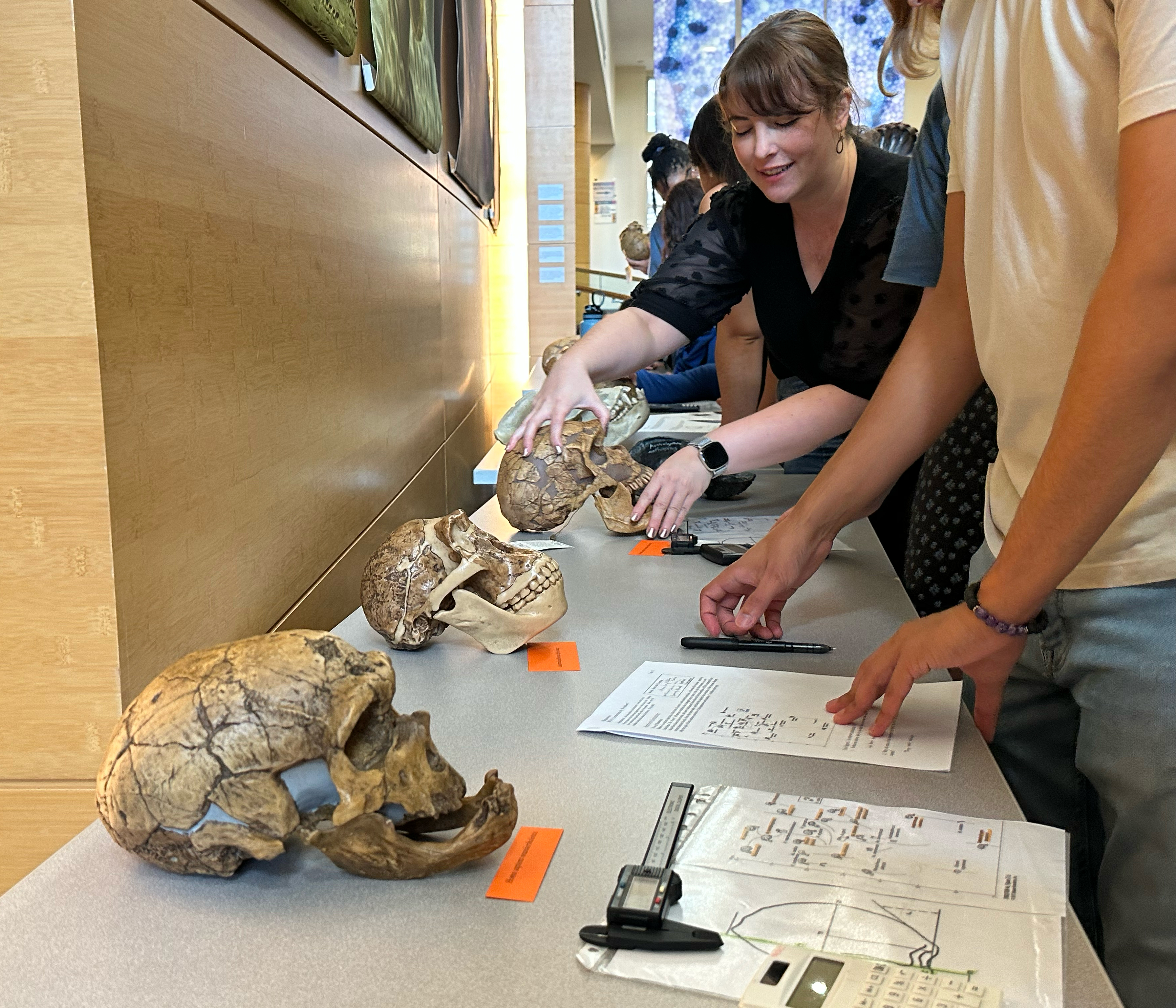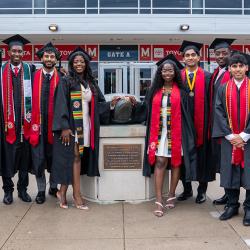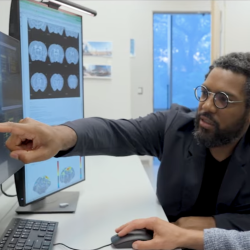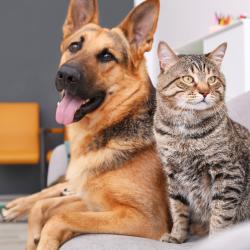‘Beyond Race’ Biology Course Busts Myths About Human Diversity
The undergraduate class teaches students that humans are more genetically alike than different.
Science has long attempted to explain human diversity. For centuries, observed differences between people—whether it was their IQ level, birth weight or lung capacity—were attributed to race, even when the evidence was scant or intentionally skewed.
An undergraduate biological sciences course at the University of Maryland is working to set the scientific record straight. The course, BSCI 151: “Beyond Race: Human Biological Diversity,” uses modern data to debunk the persistent myth that race boils down to biological differences.
“There's really no genetic difference between races,” said Department of Biology Senior Lecturer Kimberly Paczolt, one of the course’s three instructors. “We are more similar than we are different.”

Joelle Presson, assistant dean of undergraduate academic programs for the university’s College of Computer, Mathematical, and Natural Sciences (CMNS), created the class in 2010 at a time when few college-level science courses tackled questions of race. Currently, it is one of only a few CMNS classes that fulfill the “understanding plural societies” category for general education requirements, making it a popular choice for students in the sciences.
Revamped in 2022, the course is now taught in the fall by Paczolt, Biology Lecturer Nicholas Fletcher and Biology Associate Professor Philip Johnson. This semester, the team incorporated more hands-on activities to get students engaged in the subject matter.
“The lecture activities are all new,” Paczolt said. “We have an activity on forensics and another on ancestry testing—different ways that biology can be applied to ask questions that are relevant to understanding human diversity.”
Presson said the three instructors “dramatically improved” the course activities, and she is thrilled to see the course she created 13 years ago live on in a new format.
“I was so excited that when I had to leave the course, three faculty members stepped up and said, ‘We want to do this,’” Presson said. “I don’t know of any other course quite like this.”
It started with a hunch
Throughout her career, Presson had a hunch that racial traits weren’t as biologically determined as the scientific literature suggested. However, the evidence was limited, making it difficult to dispute these claims.
“While teaching, I was aware of common claims that the different races were fundamentally, genetically different,” Presson said. “My own personal belief was that genetic explanations for differences between races were unlikely, but there was no scientific way to test that belief.”
That all changed with the explosion of DNA phylogeny research in the early to mid-2000s, which allowed scientists to study mitochondrial DNA in the context of population genetics and evolutionary biology. For the first time, research started to show that individual people can vary greatly from each other, but not because of genetic racial differences. The societal effects of racism can, however, affect a person’s biology—notably in the form of chronic stress.
“Race has a clear impact on biology via racism, and there is a growing scientific literature on this topic,” Presson said. “It means that being a minority is a real experience and can affect biological processes—just not in a genetic way.”
To Presson, this new research was a “bingo” moment. She initially planned to incorporate this information into her biology class, but when UMD put out a call for new I-Series general education courses, she applied and received funding to develop a new class. She taught “Beyond Race” for many years and continues to teach an online version to students in UMD’s Chemical and Life Sciences graduate program designed for teachers.
Presson said her master’s class and the “Beyond Race” undergraduate class are both chances to challenge misinformation before it spreads.
“I had many students—and still do—who tell me they were taught in high school that differences like sickle cell anemia are due to genetic differences between the races,” Presson said. “So the chance to teach this course to high school teachers, to me, is a real boon.”
A new perspective

During a “Beyond Race” class in October 2023, students gathered for a hands-on activity in the Bioscience Research Building colonnade, where they examined models of hominin and hominid skulls, including primates and extinct human species like Neanderthals. With calipers in hand, students measured various “bone clones”—as the models are called—and compared their proportions.
“It’s a means of seeing humans in context,” Paczolt said of the activity’s goal. “Looking at our extinct relatives gives us a better understanding of ourselves because we share a common ancestor with them.”
One student, Sai Naraharisetti, said the class has been beneficial even though she is not studying biology.
“It covers a lot in a short period of time, so even though I’m a computer science major, I feel like I now have an understanding of basic biology,” Naraharisetti said. “I also really like the labs because they give you a taste of what scientists and biologists do.”
The course also offers a fresh perspective to students in the biological sciences.
“I’ve enjoyed learning about biology from a different perspective—a racial and ethnicity perspective—that’s not really talked about in biology a lot,” said Daniel Yang.
Darsh Mehta, a biological sciences major and one of the course’s three undergraduate teaching assistants, agreed that the class is unique.
“In normal biology, we just learn genetics, Punnett squares and how organisms survive,” Mehta said. “I like the real-world applications behind this course—the consequences that race has today in society.”
Presson said the opportunity to teach science that students can use in their day-to-day lives is one of the benefits of this course.
“I have had students tell me, ‘I was in a conversation with my family or my dormmates and they argued that things were racial or genetic, and now I have an answer. I have something to say,’” Presson said. “Students now have data that they can take home, and it’s science—it’s not me just promulgating my view. That made me realize, ‘Wow, I’ve made a difference that matters.’ I can’t imagine doing anything better.”







